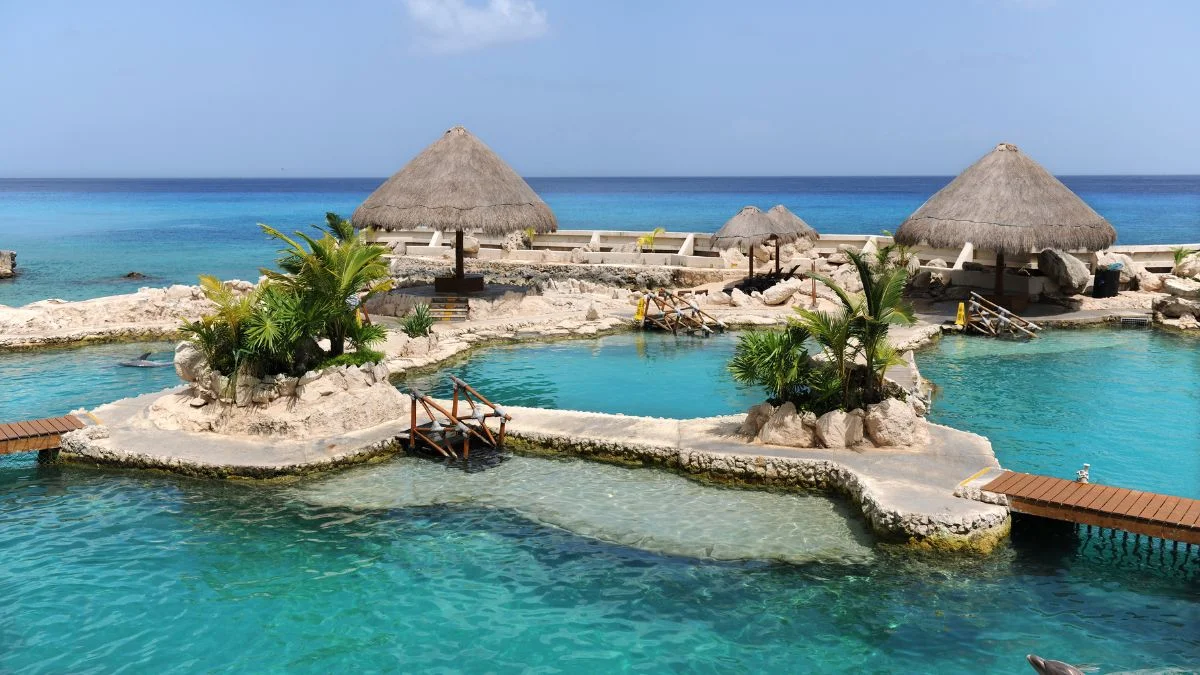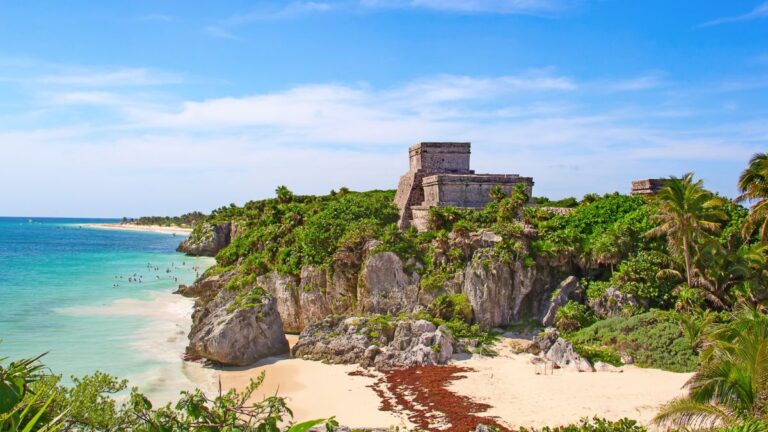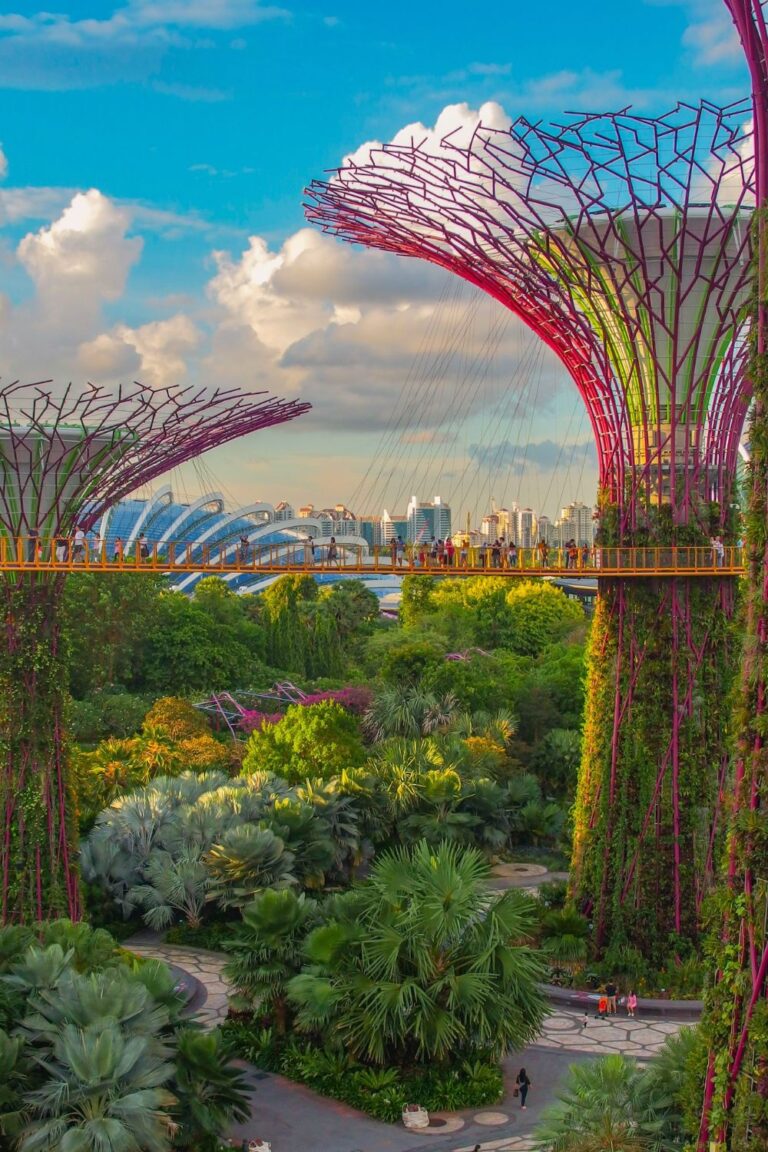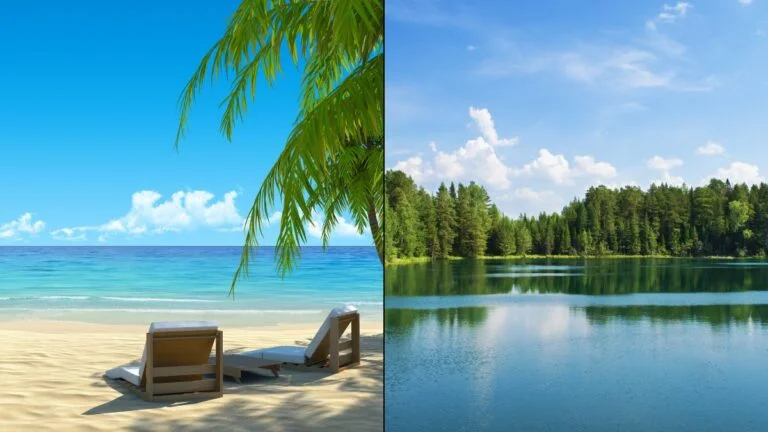Worst Time to Visit Cozumel: Hurricane Season and Cruise Ship Crowds

As participants in Amazon Associates and other programs, we earn from qualifying purchases. This comes at no additional cost to you. For more details, see our Affiliate Disclosure.
Cozumel, a gem of the Caribbean, is known for its turquoise waters, vibrant coral reefs, and rich Mayan history. But like all paradises, there are times when its beauty is overshadowed by nature’s wrath and the influx of tourists. If you’re considering a trip, it’s essential to be aware of Cozumel’s hurricane season and the periods when cruise ship crowds reach their peak, to ensure your visit is as enjoyable and hassle-free as possible.
HIGHLIGHTS
- Shoulder seasons in Cozumel, including late spring and early fall, offer a unique opportunity for travelers seeking an authentic experience with moderate weather and crowds.
- Visiting Cozumel during local festivals and cultural events, such as the Carnaval de Cozumel or the El Cedral Festival, provides deep insights into the island’s traditions and heritage.
- Alternative travel dates allow visitors to align with Cozumel’s natural rhythms, experiencing the island in its most genuine form.
Understanding Cozumel’s Hurricane Season: When and Why
Cozumel, located off the eastern coast of Mexico’s Yucatán Peninsula, is in the Caribbean Sea, an area known for its annual hurricane season. This season is characterized by powerful tropical storms and hurricanes that can pose significant risks to travelers and residents alike.
When is the Hurricane Season in Cozumel?
The official hurricane season in the Atlantic Basin, which includes the Caribbean Sea, spans from June 1st to November 30th. However, the peak activity often occurs between August and October. During these months, the likelihood of tropical storms and hurricanes forming and affecting areas like Cozumel is significantly higher.
Why Does Cozumel Experience Hurricanes?
The Caribbean Sea and the Gulf of Mexico are prime breeding grounds for hurricanes due to a combination of factors:
- Warm Ocean Waters: Hurricanes require sea surface temperatures of at least 26.5°C (about 80°F) to develop. The warm waters of the Caribbean during summer and early fall provide the necessary heat energy.
- Atmospheric Conditions: The presence of a pre-existing weather disturbance, moisture, and relatively light winds aloft can encourage the development of hurricanes.
- The Intertropical Convergence Zone (ITCZ): This is where the trade winds of the Northern and Southern Hemispheres meet. The ITCZ is often the starting point for the disturbances that become hurricanes.
While hurricanes are a natural part of the region’s climate, their intensity and frequency can be influenced by larger climatic patterns, such as El Niño and La Niña.
How Often Does Cozumel Get Hit?
While many storms form in the Atlantic and Caribbean during the hurricane season, not all of them reach Cozumel. On average, Cozumel feels the effects of a hurricane every couple of years, but direct hits are less frequent. However, even if a hurricane doesn’t make landfall in Cozumel, nearby storms can still bring heavy rainfall, strong winds, and rough seas.
Being aware of the hurricane season and understanding the reasons behind it can help travelers make informed decisions about their trips to Cozumel. Always keep an eye on weather forecasts and heed local advisories if you’re planning to visit during this period.
The Impact of Hurricanes on Tourism Activities
Hurricanes, with their ferocious winds, torrential rains, and roaring storm surges, have a significant impact on Cozumel’s tourism landscape. The island relies heavily on tourism, and the effects of these natural phenomena can be profound, both in the short and long term.
Immediate Disruptions to Travel Plans
- Flight Delays and Cancellations: Airlines often cancel flights when a hurricane is imminent, stranding travelers or causing them to reschedule their trips.
- Port Closures: Cruise ships might alter their routes to avoid storms, meaning they could skip Cozumel or delay their arrival.
- Accommodation Complications: Some hotels and resorts may close temporarily either for safety precautions or due to damages.
Attraction Closures and Limitations
- Underwater Activities: The increased turbidity and rough waters make activities like snorkeling and diving less enjoyable and potentially more dangerous.
- Land Tours and Excursions: Parks, Mayan ruins, and other attractions might close during and immediately after a hurricane to assess and repair any damages.
- Beach Erosion: The force of a hurricane can strip beaches of their sand, impacting their aesthetics and usability for sunbathing or other activities.
Economic Impacts
- Loss of Revenue: With fewer tourists, local businesses, including restaurants, shops, and tour operators, face significant revenue losses.
- Employment Challenges: Some local residents might temporarily or permanently lose their jobs if the tourism industry takes a severe hit.
Long-Term Consequences
- Rebuilding and Restoration: Post-hurricane, the island might undergo extensive rebuilding efforts, which could take months or even years, depending on the hurricane’s severity.
- Reputation Impact: Even after the immediate dangers are gone, the memory of a recent hurricane can deter potential visitors from choosing Cozumel as their destination.
- Natural Environment: Hurricanes can cause damage to coral reefs and other ecosystems, which are primary attractions in Cozumel. The recovery of these natural assets can take years.
Mitigation and Recovery Efforts: Tourism is the lifeblood of Cozumel, and the island has historically shown resilience in the face of hurricanes. The local government and businesses often work collaboratively to restore the island’s attractions quickly. Moreover, international aid and insurance can also play a role in expediting the recovery process.
For tourists, understanding the impact of hurricanes on Cozumel’s tourism activities can help set realistic expectations and encourage supportive behaviors, such as patronizing local businesses or considering voluntourism to help in post-hurricane recovery efforts.
Cruise Ship Schedule: The Busiest Months in Cozumel
Cozumel is a popular port of call for many Caribbean cruise itineraries, with its vibrant culture, pristine beaches, and rich marine biodiversity. However, the influx of thousands of tourists from cruise ships can significantly change the ambiance and experience of the island. Knowing the busiest months can help travelers plan a more serene and authentic visit.
Peak Cruise Seasons
- Winter Getaway (January to March): As travelers from colder regions, especially North America, seek a warm retreat, Cozumel sees an uptick in cruise ship arrivals. These months are among the busiest, with ships docking almost daily.
- Spring Break (March to April): Cozumel becomes a hotspot for students and families enjoying spring break, leading to an increased number of cruise ship visits.
- Holiday Season (Late December): The holiday season brings another surge of tourists, as families and individuals take vacation time to enjoy the Caribbean’s warmth.
Off-Peak Cruise Seasons
- Summer (May to August): While summer is not precisely devoid of cruise ships, the frequency is less compared to the winter months. Families traveling during school vacations may still opt for a cruise that stops in Cozumel.
- Hurricane Season (September to November): Fewer cruises operate in the Caribbean during the hurricane season, translating to fewer ship arrivals in Cozumel. However, it’s crucial to note that while there may be fewer tourists, the weather can be unpredictable.
Effects of Cruise Ship Crowds
- Attraction Overflows: Popular attractions, especially those close to the port, can get crowded, leading to longer wait times and a less intimate experience.
- Price Fluctuations: The surge of tourists can sometimes lead to increased prices for local goods, services, and excursions.
- Environmental Impact: The daily influx and departure of large cruise ships can strain local ecosystems, particularly marine environments.
Planning Around the Schedule
For travelers who want to experience Cozumel without the large crowds, it’s advisable to:
- Check Cruise Timetables: Many websites offer information on cruise ship schedules, allowing visitors to see which days have fewer or no ship dockings.
- Visit Further Afield: Opt for attractions further from the port, as they tend to be less crowded, even on busy cruise days.
- Stay Overnight: Cruise ship tourists are usually on the island for a day. Staying multiple nights allows for a more immersive experience, especially during the evenings when the cruise ship crowds have departed.
Being informed about the cruise ship schedule in Cozumel ensures that travelers can make the most of their visit, whether they seek the bustling energy of peak season or the calm serenity of off-peak times.
Navigating the Cruise Ship Crowds: Tips and Tricks
Cozumel’s allure is undeniable, but with the regular docking of mammoth cruise ships, the influx of day-trippers can transform the island’s serene environment into a bustling hub. If you find yourself in Cozumel during these peak times, fret not. With a few tips and tricks, you can navigate the crowds and still have a memorable experience.
1. Early Bird Advantage: Rise and shine before the cruise ship tourists disembark. Most cruise passengers start their island excursions between 9 AM and 10 AM. Starting your day early gives you a few hours of quieter exploration.
2. Venture Off the Beaten Path: Skip the attractions closest to the port, as these are the first stops for most cruise visitors. Explore lesser-known beaches, hidden coves, and off-the-beaten-path eateries to experience a quieter side of Cozumel.
3. Rent Transportation: Consider renting a bike, scooter, or car to give you the flexibility to explore areas that are not typical stops for cruise ship excursions. This can lead you to quieter spots and allow you to operate on your own timeline.
4. Schedule Popular Attractions for the Afternoon: Most cruise tourists return to their ships by late afternoon, making attractions less crowded after 3 PM.
5. Embrace the Local Pace: Avoid getting caught up in the rush of cruise ship tourists. Take your time, relax at a local café, and watch as the hustle and bustle unfolds.
6. Use Technology: Apps and websites provide real-time information about cruise ship schedules. Knowing the number of ships and their sizes can help you anticipate crowd levels.
7. Plan Water Activities Strategically: Book diving or snorkeling trips during peak disembarkation times. While the cruise ship passengers are crowding the streets and attractions, you’ll be exploring the serene underwater world.
8. Ask the Locals: Engage with local shop owners, bartenders, or your hotel’s staff. They often have the best insights on where to go and when, to avoid the bulk of the crowds.
9. Consider Staying Overnight: As the sun sets and cruise ships depart, Cozumel reverts to its peaceful self. Enjoy the evening ambience, local dining, and nightlife without the day crowds.
10. Embrace the Crowds: If you can’t beat them, join them. Sometimes, it’s fun to be amidst the lively atmosphere. Participate in group activities, engage with other tourists, and make new friends.
While the surge of cruise ship passengers can be overwhelming, with a bit of planning and adaptability, you can still experience the magic of Cozumel. After all, it’s not just about the destination but also the journey and the memories you create along the way.
Balancing the Best Weather with Fewer Tourists
Cozumel’s tropical allure is a magnet for visitors seeking sun-kissed beaches and azure waters. Yet, the island’s popularity, combined with seasonal weather variations, can make it challenging to find that sweet spot—a time when you can enjoy idyllic weather without navigating throngs of tourists. Here’s how to strike the perfect balance:
1. Know the Seasons:
- Peak Season (December to April): Clear skies, warm temperatures, and minimal rainfall mark Cozumel’s dry season, which also coincides with the major tourist influx. While the weather is at its best, expect higher prices and larger crowds.
- Off-Peak Season (May to early June, late September to November): These transitional periods offer a balance between manageable tourist numbers and decent weather. Rain is sporadic, and temperatures are warm but not scorching.
- Hurricane Season (June to November): While this period brings unpredictable weather, it’s also when the island is the least crowded. Not every day sees storms, and you can experience stretches of beautiful weather.
2. Aim for the Shoulder Season:
- Booking your trip during the shoulder season—those transitional months between the peak and off-peak periods—can be a game-changer. You’ll experience fewer crowds while still enjoying relatively good weather.
3. Monitor Weather Patterns:
- With technology at our fingertips, use apps and websites that provide detailed weather forecasts. This can help you plan your activities and make the most of sunny days.
4. Flexibility is Key:
- If your schedule allows, be flexible with your travel dates. Monitoring cruise ship schedules, flight availability, and hotel bookings can give you insights into potential crowd sizes.
5. Enjoy Indoor and Cultural Activities:
- On days when the weather might not be perfect, dive into Cozumel’s rich cultural scene. Visit museums, attend workshops, or savor the local cuisine at restaurants.
6. Stay Longer, Explore Deeper:
- Extend your trip duration. This allows you to pace yourself, avoiding overly crowded attractions on peak days and exploring them when things quiet down.
7. Consult Travel Forums and Blogs:
- Many travel enthusiasts share their experiences, offering insights on the best times to visit, crowd sizes, and weather conditions. Platforms like TripAdvisor, Lonely Planet forums, and niche travel blogs can be goldmines of information.
8. Book Accommodations Away from the Main Tourist Hubs:
- Staying a bit further from the main attractions or popular beaches can offer a quieter experience. Plus, it gives you a chance to explore lesser-known parts of Cozumel.
9. Early Mornings and Late Evenings:
- These times generally see fewer tourists, offering a more serene environment. Whether it’s a sunrise walk on the beach or a late-night stroll in the town, these moments can be magical.
10. Remember the Essence of Travel:
- Sometimes, it’s not just about perfect weather or avoiding crowds. Embrace the unexpected, and remember that experiences, even those outside of our plans, enrich our journeys.
By being informed, flexible, and embracing both the sunshine and occasional rain shower, you can discover a Cozumel that offers both beauty and tranquility.
The Silver Lining: Benefits of Visiting During Off-Peak Times
Many travelers tend to aim for peak seasons when planning their vacations, hoping to catch a destination in its full glory. However, there’s a hidden charm in visiting places like Cozumel during off-peak times. Here’s a dive into the unexpected perks and silver linings of choosing the road less traveled by timing your trip during quieter months.
1. Cost-Effective Travel:
- Lower Accommodation Rates: Hotels and resorts often slash their prices during off-peak seasons to attract visitors.
- Discounted Activities: Tour operators and activity centers may offer special deals or discounts to lure tourists.
- Cheaper Flights: Airlines tend to reduce fares during periods of reduced demand.
2. Personalized Experiences: With fewer tourists around, local guides and tour operators can offer more personalized and immersive experiences. It’s an opportunity to dive deeper into Cozumel’s culture and history.
3. Authentic Interactions: Interacting with locals becomes easier and more genuine when they aren’t swamped by a rush of tourists. These interactions can lead to memorable experiences, from discovering hidden gems to getting invited to local events.
4. Freedom and Space: Enjoy Cozumel’s attractions without jostling for space. Whether it’s a serene beach, a diving spot, or a local market, the luxury of space enhances the experience.
5. No Rush and No Queues: Visit popular attractions without the long wait times. The reduced crowd means spontaneous plans are more feasible, and there’s no need to rush from one spot to another.
6. Sustainable Tourism: Traveling during off-peak times helps distribute tourist traffic throughout the year, reducing the strain on local resources and the environment during peak periods.
7. Cooler Weather: While Cozumel’s weather is pleasant most of the year, off-peak times might offer respite from the scorching peak-season heat, making outdoor exploration more comfortable.
8. Unique Photographic Opportunities: Capture the beauty of Cozumel without the interference of crowds. The off-season might also offer unique scenes, such as dramatic monsoon skies or deserted streets that lend a different charm to your photos.
9. Chance of Exclusive Events and Festivals: While peak seasons focus on catering to tourists, off-peak times might coincide with local festivals or events that aren’t widely publicized, offering a genuine taste of Cozumel’s traditions.
10. Renewed Appreciation: When you’re not battling crowds or following a strict itinerary, you get the chance to pause, reflect, and genuinely appreciate the beauty and serenity of the destination.
While peak seasons have their allure, there’s a distinct and understated beauty in experiencing Cozumel during its quieter periods. Not only does it promise relaxation and genuine interactions, but it also offers a perspective that many might miss during the bustling peak times.
Safety First: Precautions to Take During the Hurricane Season
Choosing to visit Cozumel during hurricane season might come with its set of advantages, such as fewer crowds and discounted rates. However, safety should always be the foremost priority. As hurricanes can be unpredictable and potentially dangerous, here are crucial precautions and tips to ensure a safe and enjoyable trip during this period:
1. Stay Informed:
- Monitor Weather Forecasts: Keep an eye on weather apps, local news, and the National Hurricane Center’s updates. Knowledge of any potential storm’s path and strength will help in decision-making.
- Understand Warning Systems: Familiarize yourself with the difference between a hurricane “watch” (conditions possible within 48 hours) and a hurricane “warning” (conditions expected within 36 hours).
2. Choose Accommodations Wisely: Opt for hotels or resorts with a proven track record of hurricane preparedness. Many establishments will have contingency plans and safety protocols in place. Inquire about the facility’s hurricane guarantee or policy, ensuring a refund or rescheduling if a hurricane disrupts your trip.
3. Pack a Hurricane Kit: Include essentials like bottled water, non-perishable food, flashlights, extra batteries, a first-aid kit, necessary medications, and important documents sealed in a waterproof bag.
4. Stay Connected: Ensure your phone is charged and consider buying a local SIM for more reliable communication. A portable power bank can be a lifesaver during power outages. Inform friends or family about your itinerary and whereabouts, providing them with contact details of your accommodation.
5. Know Your Evacuation Routes: Upon arrival, familiarize yourself with local evacuation routes and safe zones. Many hotels will provide this information, but it’s also available at local tourism offices.
6. Avoid Risky Areas: Stay clear of beaches and waterfront areas during warnings, as they’re susceptible to storm surges and high waves. Refrain from water activities, even if the weather seems calm. Underwater currents can be unpredictable during this period.
7. Secure Your Belongings: If a storm seems imminent, move valuables to safe places, close and secure windows, and stay indoors.
8. Follow Local Advice: Heed warnings and advice from local authorities. They have experience in handling such situations and will provide the best guidelines.
9. Consider Travel Insurance: Opt for comprehensive travel insurance that covers disruptions due to hurricanes. This can include trip cancellations, delays, and emergency evacuations.
10. Be Flexible: Understand that plans might need to change based on weather conditions. Activities might get postponed, or you might need to stay indoors for prolonged periods.
11. Stay Calm and Rational: Panic can exacerbate situations. Stay calm, make informed decisions, and always prioritize safety over plans or activities.
While the idea of visiting during hurricane season might seem daunting, with the right precautions, you can still have a memorable experience in Cozumel. It’s all about balance: reaping the benefits of off-peak travel while ensuring you and your loved ones stay safe.
Alternative Travel Dates: Best Times to Experience Cozumel Authentically
The shoulder seasons, which refer to the transitional periods between high and low travel seasons, are often overlooked by many travelers. Yet, in Cozumel, they present a unique opportunity. By visiting during these times, you’re greeted with pleasant weather and moderate crowds, allowing for a more intimate exploration of the island’s offerings.
The Charm of Late Spring
As spring progresses and inches closer to summer, many tourists have already had their sun-filled vacations, making late spring a quiet yet beautiful time to visit Cozumel. The island is bathed in warmth, but the scorching heat of summer is yet to set in, and there’s a palpable calm before the onset of the bustling high season.
The Tranquility of Early Fall
Once the summer crowds dissipate, early fall in Cozumel paints a picture of serenity. The temperatures are still comfortable, and the occasional rainfall adds a fresh, rejuvenating touch to the island’s landscapes. With fewer tourists around, it’s a time that lends itself to slow travel and authentic local interactions.
Festivals and Cultural Events
While Cozumel is known for its pristine beaches and vibrant marine life, its cultural calendar is equally enticing. Visiting during local festivals or cultural events can offer deep insights into the island’s traditions, customs, and way of life. Be it the Carnaval de Cozumel in February or the El Cedral Festival in April and May, these events showcase the island’s rich heritage and festive spirit.
Embracing the Island’s Natural Rhythms
Regardless of the season, there’s a certain timelessness to Cozumel’s allure. However, by choosing alternative travel dates, you align your visit with the island’s natural rhythms, witnessing Cozumel in its most genuine form. It’s not just about escaping the crowds but about immersing yourself in an environment where the island’s essence shines brightest.






